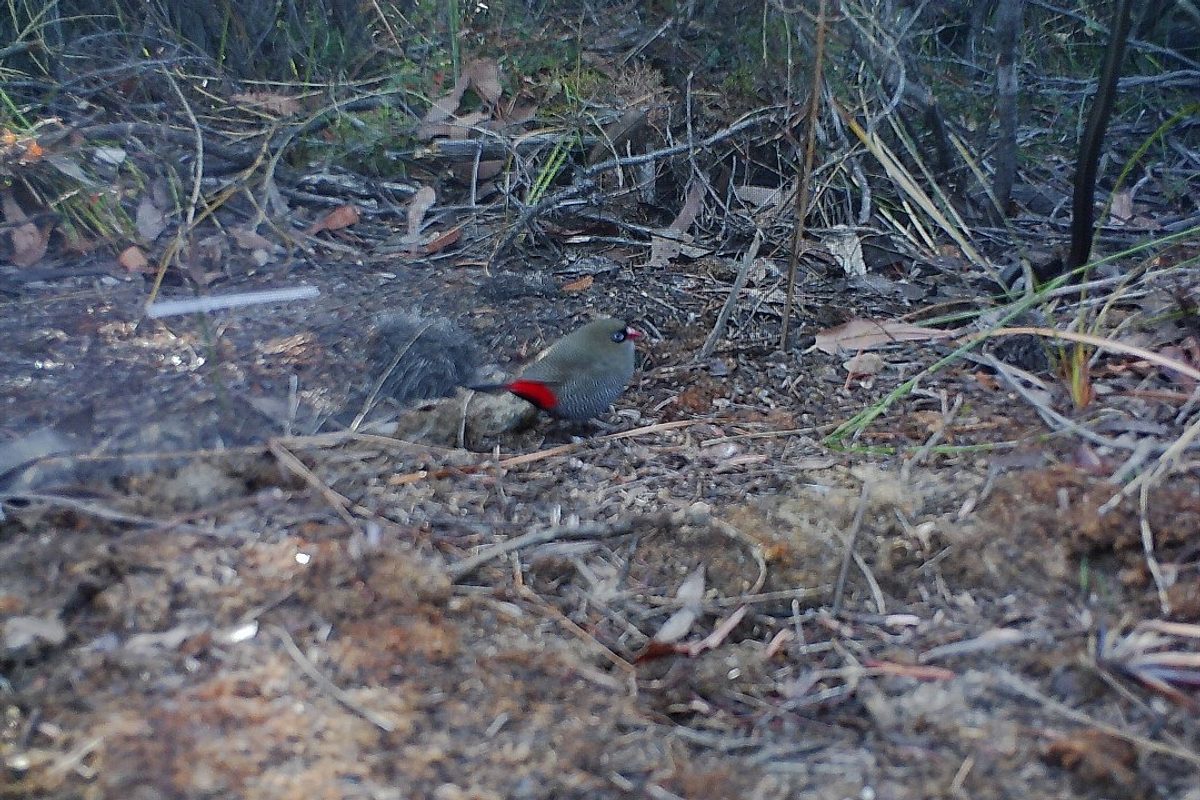
Find out how the lesser-known beautiful firetail is faring post-bushfire
The 2019-20 summer bushfires that swept across Australia had devastating effects within South Australia too. For habitat and wildlife, fires on Kangaroo Island left a trail of destruction.
Here we shine a light on some of the lesser-known species that were most affected.
Read our stories about the Kangaroo Island western whipbird, the Australian owlet-nightjar, the southern emu-wren, and the bassian thrush, and read on to learn about the beautiful firetail.
About the firetail
The firetails most striking asset is its bright scarlet rump. Males and females both have similar coloured plumage.
The beautiful firetail lives either singly or in flocks of up to 12, with a large home range of several square kilometres.
It breeds from September to January.
The firetail is widespread in south-eastern Australia, but is listed as vulnerable in South Australia, and can be found on Kangaroo Island and mainland SA.
What type of monitoring is underway and why?
Following the summer bushfires, National Parks and Wildlife Service South Australia (NPWSSA) has been monitoring wildlife on Kangaroo Island with motion sensor-activated cameras.
Not only do these cameras help the NPWSSA team learn about common species, but they also provide valuable information about vulnerably listed species, such as the beautiful firetail.
Surveys have also been undertaken by Birdlife Australia in the hopes of spotting some of these elusive creatures.
Both of these techniques on Kangaroo Island have helped build further knowledge about this bird and its behaviour.
What does monitoring reveal about the species?
During recent bird surveys 21 beautiful firetails were recorded, and they were at 40% of the 32 sites surveyed in unburnt vegetation.
These firetails are also being detected on motion-sensing cameras, with small numbers of firetails foraging quietly and unobtrusively on the ground, mostly at dusk and dawn.

Often a pair of the birds are seen in a sequence of images, as they potter about searching for seeds on the open ground.
Much of their normal food (grass seeds and the seeds of casuarinas and tea) was burnt, but they are likely surviving on the seeds of new grasses.
The beautiful firetail is likely to adapt with the recovering environment, but continued monitoring and feral cat control will help support the recovery of the species over the coming years.
Do you want to learn more about how SA’s wildlife is recovering post-bushfires? Read about theKangaroo Island dunnartor theglossy black-cockatoo.
(Main image courtesy of Jim McLean)





